

This summary of the Mongolia History is based on books and other documents I read before and during my assignment in Mongolia and observations in the 12 weeks at the OT mine site in the Gobi. I took the liberty of interpreting some of the facts and events based on what I learnt and observed. In the end History is not more than descriptions of facts embelished by the tendencies of the writer
The description of the earlier years of Genghis Khan or Temujin, his real name until he became great leader (Genghis Khan), are based on books written by westerners, mainly Jack Weatherford. I could not find any literature written by Mongol writers until I went to Mongolia and enquired there.
My friend Naba offered me a book written by Baabar a famous Mongolian writer. I also found a good collection of books on Mongolian history at the airport. These were the sources of most of my comments.
The first known settlement of Mongol people dated almost eight hundred thousand years ago. The land where Mongolia is now suffered many dramatic changes along the years. The weather patterns changed drastically and required frequent migrations to provide suitable grazing conditions. This resulted in the nomadic lifestyle of the Mongols, still embraced by many today. The development of the Ger, the demountable felt wrapped tent, contributed enormously for the mobility of the Mongols in their migrations.
The land provided only basic necessities and therefore the nomadic tribes fought each other and neighbouring lands to complement their needs.
In the middle of this turmoil Temujin was born. It was then 1162 and his father Yesukhei was a leader of a tribe in the north central Mongolia. As it was custom at the time, the father arranged his marriage with Borte, a girl from a different tribe. This was the way they reinforced the alliances between the tribes and made them more powerful in the fights against each other. When he was 9 he went to live with Brote family.
After dropping Temujin, Yesukei was poisoned by Tatars. Temujin return home to try to claim the leadership of the tribe but was denied and the entire family left to die in the stepps. They had to survive catching rodents and whatever they could catch.
Temujim suspecting that his older brother was not sharing the catch follow him and killed him when he confirm his suspicious.
During the times they lived in the steppes his mother told them about the importance of alliances and this was always his main strategy when trying to unite the Mongols.
He married Borte when he was 16. Not long after, a raid from another tribe captured Borte. Temujim tried to rescue the wife and after a while succeeded. They had a son but there was always suspicious that he was not Temujin’s son. In one of the constant battles amongst the Mongol tribes, Temujin was captured and sold as slave. He managed to escape and continued with his dream of uniting the Mongols.
As a result, by 1206 Temujin had managed to unite or subdue the Merkits, Naimans, Mongols, Khereids, Tatars, Uyghurs, and all other smaller tribes under his rule. It was a monumental feat for the "Mongols" as they became known collectively.
Through a combination of outstanding military tactics and merciless brutality Temujin managed to gain control of all the Mongol tribes and receive the title of Genghis Khan which means “Universal Ruler”.
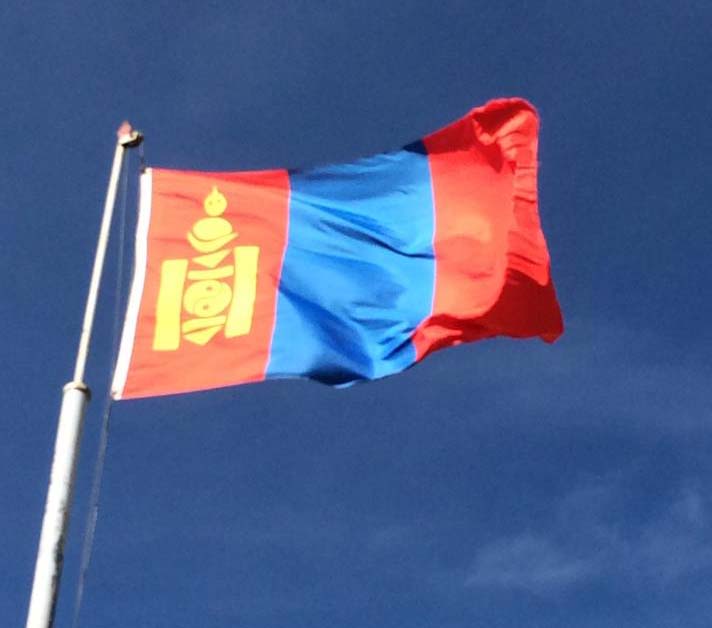
Mongolia Flag
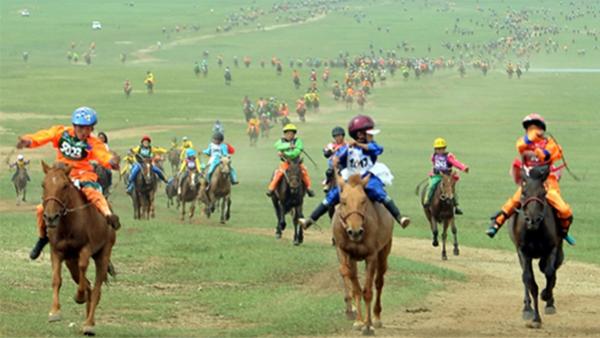
Horsemanship is gained earlier in life
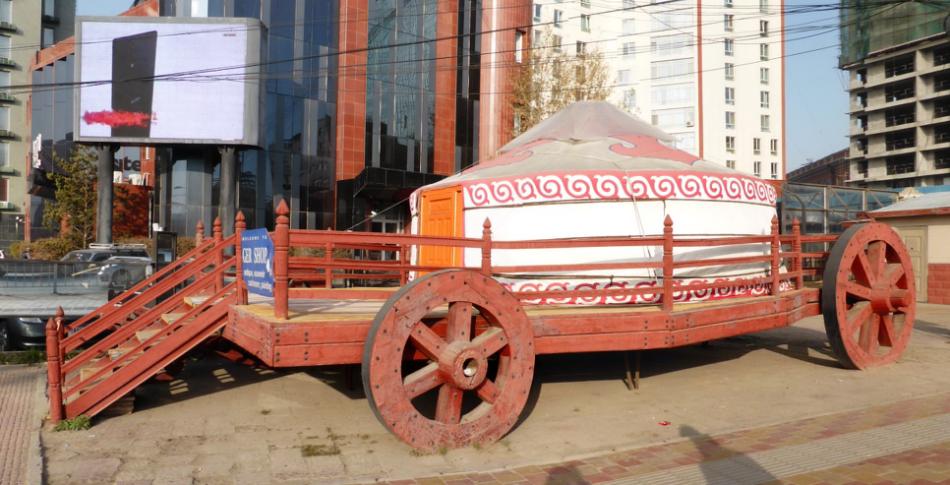
A VIP Ger
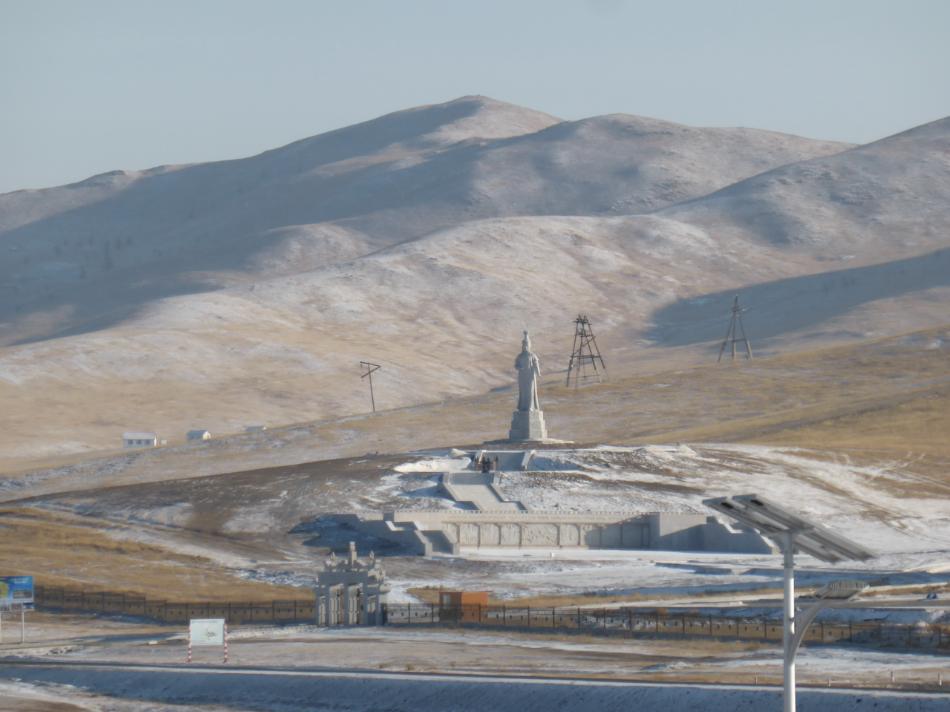
Monument to Temujin's mother Hoelun
Genghis established very strict rules of conduct based on a legal code called Yassa. This code had very advanced edicts prohibiting things like adultery, blood feuds, theft, false witnessing. Also included things like freedom of religion, taxation and environmental rules.
He substituted the rule of promotion based on ethnicity or heredity with the one based on merit and made a crime the abduction of women. This was one of the main causes of many vendettas amongst the tribes and affected Genghis personally. Loyalty was paramount for Genghis and there are some examples in history of how inflexible he was in this area.
Being aware of the relative small size of his army Genghis tried always to incorporate enemy elements that surrendered to his army. The structure of his army was also unique in those days. The Mongol army, entirely composed by cavalry, was organised in multiples of 10 and with high degrees of operating autonomy. The only aspect that was not negotiable was surrender or retreat unless it was part of the strategy to lure the enemy to an ambush. If one soldier surrendered of retreated the entire group of 10 was executed.
The technique of using the bow and arrow accurately while mounted and the horsemanship skills gave the Mongols an unbeatable advantage. Under Genghis leadership the Mongols created the largest empire in the world. In terms of land conquered, Genghis Khan built an empire four times larger than the empire of Alexander the Great.
For such an influential figure, very little is known about Genghis Khan’s personal life or even his physical appearance. No contemporary portraits or sculptures of him have survived, and what little information historians do have is often contradictory or unreliable.
Genghis died is 1227 and the cause is unknown. Some accounts say that he died when he fell off his horse, and others that he was killed by an unknown respiratory illness. One other account probably false, tells that a Tangut princess, captured in battle and added to Genghis’ harem, mortally wounded him.
Before he died he split the empire and allocate responsibilities for governing the regions to his sons. This was not very well accepted by all. After his death his sons started fighting each other until 1229 when Ogodei (third son of Genghis) was elected as a replacement for Genghis. For around 20 years the empire grew and showed some stability.
After Ogodei death in 1241 his sons (grandsons of Genghis) Kubilai and Arig fought each other. Kubilai won and moved the capital to Beijing and started the Yuan Dynasty. There was large sections of the Mongol nation that did not agree and soon they returned to the old Mongolian ways of fighting each other until 1368 when they completely lost the empire and end up being controlled by the Chinese, Russians and Manchu. China annexed Inner Mongolia.
The Manchu established the Qing dynasty and ruled Mongolia and China until 1911. During the Manchu occupation Russia was given large areas of Mongolia in exchange for land in Manchuria at the time under Russia control .
The Qing dynasty weakened and in 1021 Mongolia declared independence with the help from Russia. The Mongols tried to regain control of Inner Mongolia from the Chinese but Russia did not support the claim.
Until 1990 Mongolia was under the influence / control of the Soviet Union which tried to establish a communist type government in Mongolia.
Genghis Khan is now seen as a national hero and founding father of Mongolia, but during the era of Soviet rule, the mere mention of his name was banned. The Soviets tried to suppress the Khan’s memory by removing his story from school textbooks and forbidding people from making pilgrimages to his birthplace in Khentii. Under the soviet control the Mongols abolished the ancient Mongolian script and adopted the Cyrillic alphabet in use today.
Genghis Khan was eventually restored to Mongolian history after the country won independence in the early 1990's.
With the collapse of the Soviet Union, Mongolia introduced a new Constitution in 1992. Unable to get any help from the former Soviet Union the Mongols tried to apply the only lessons they had, communist doctrines, which failed as expected. They persevered trying socialism models but after ten years they turned to Japan and other international institutions to help with the rebuilt of the economy.
Reading the stories of this era I was amazed to see China and the Soviet Union discussing the future and destiny of Mongolia with very little involvement of the Mongols. Mongolia was then reduced to the Outer Mongolia region with Inner Mongolia and the northern part under China and Russia until today.
Surprisingly the Mongols that I talked to never mentioned the fact that a large part of their country has been occupied by foreign powers and I have not read anywhere a reference of the lost land. The Mongols seem to have accepted as a fait accompli which when one looks at the troubles in the world today over occupied land, it shows again how special people Mongols are. They seem to be happy with what they have and nothing seems to faze them.
Mongolians in general do not emigrate. They go abroad to study and work but always return home as soon as they can.
Today Genghis is still a semi-God in Mongolia and one cannot see or hear any negative reference to his life. The principles he proclaimed are still very much in place, in particular loyalty and respect for hierarchy.
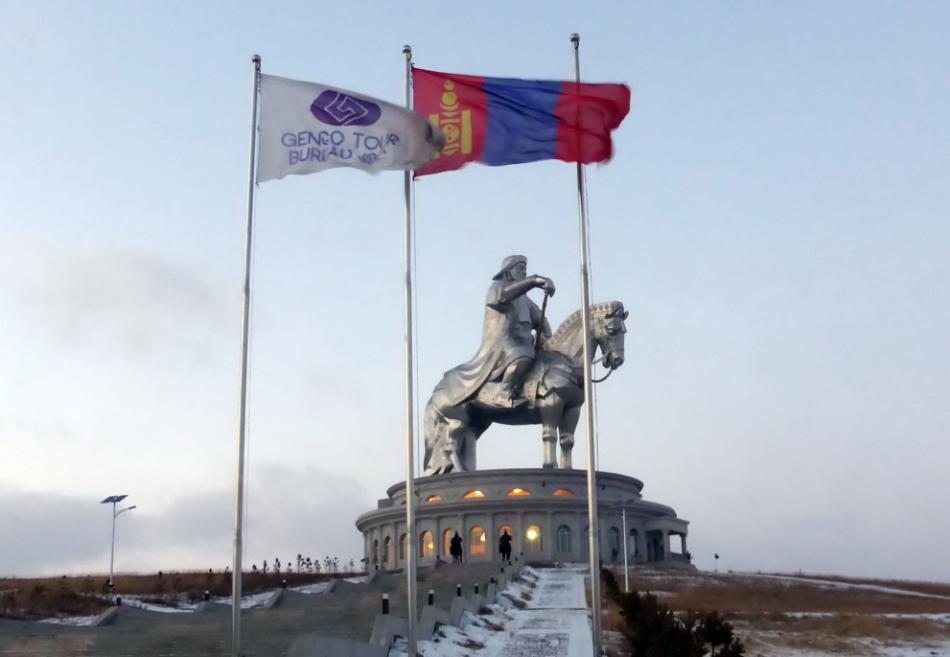
Genghis Khan Memorial
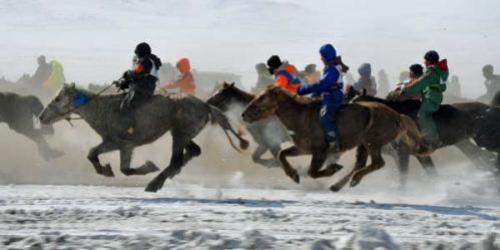
Winter races for kids
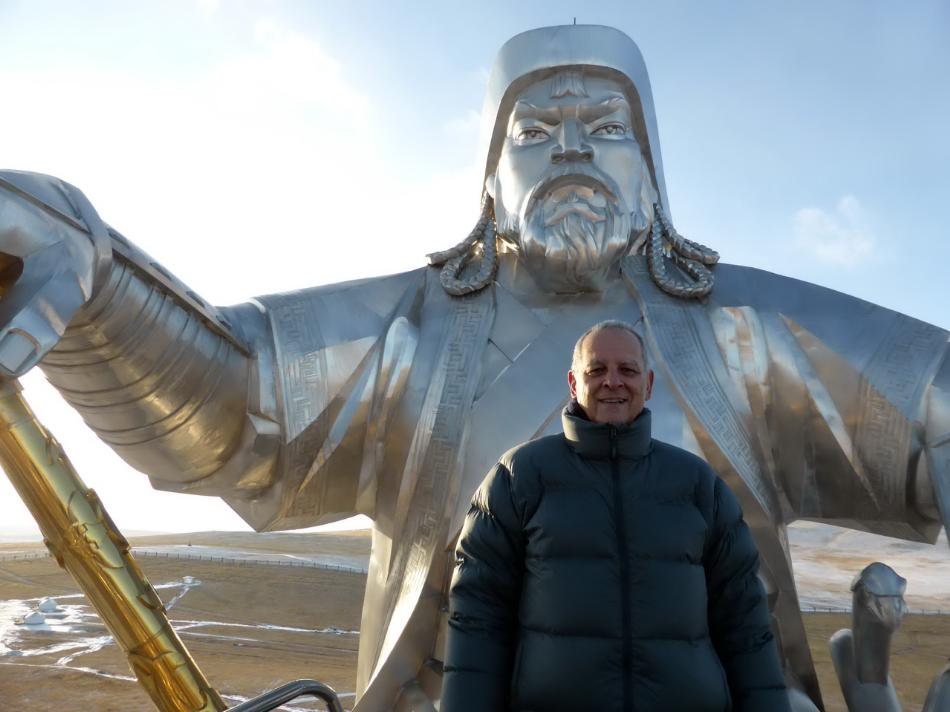
Genghis Khan Memorial
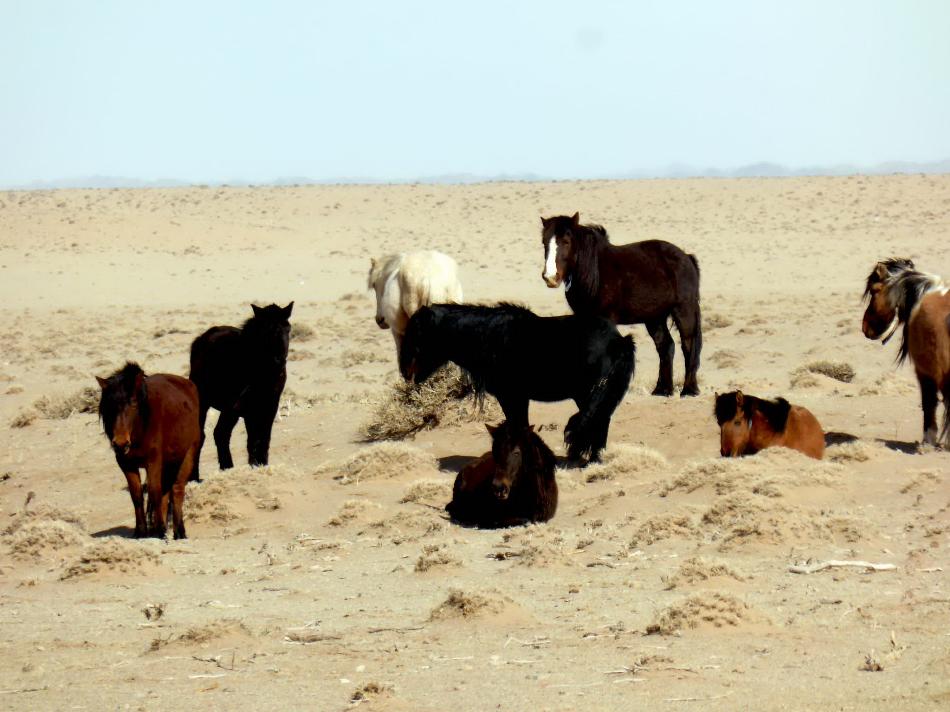
The horses instrumental to build the empire
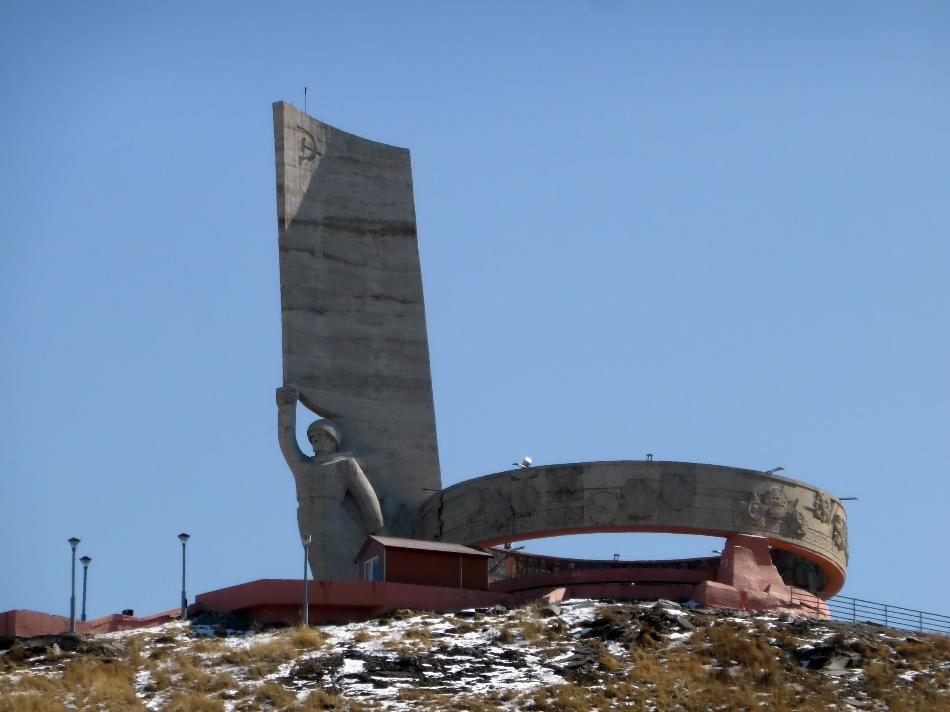
Soviet Leagacy
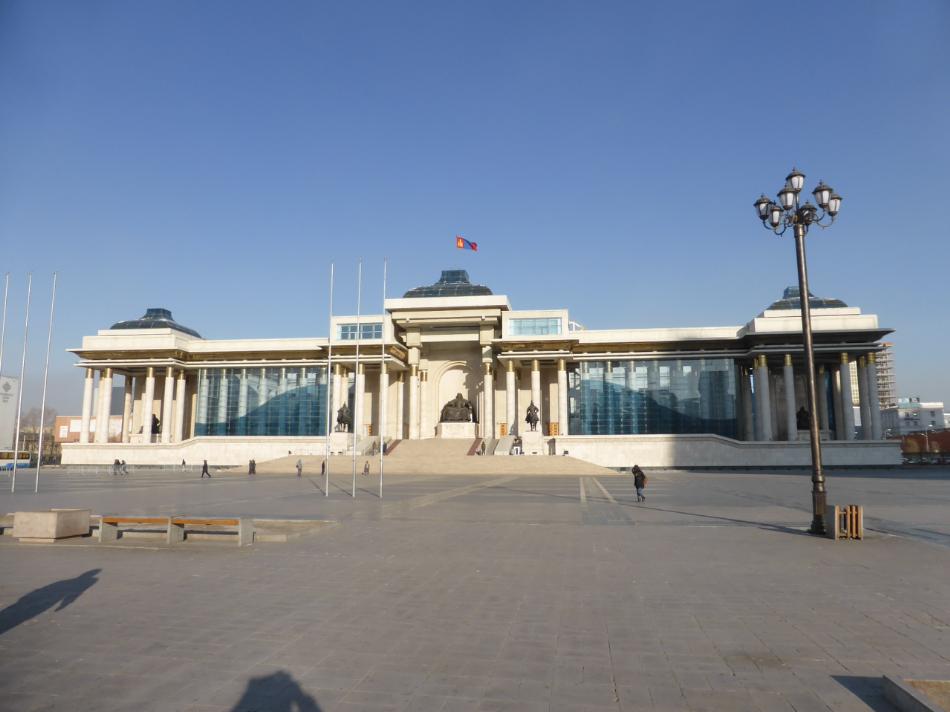
Mongolian Parliament